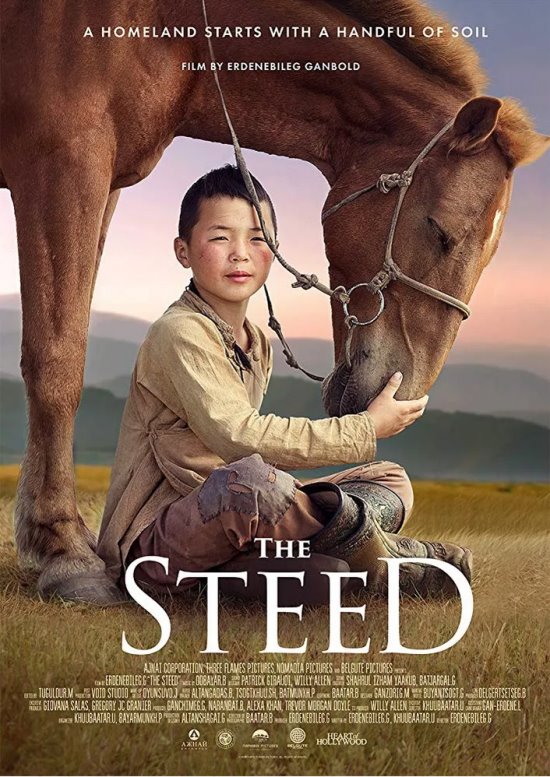
| ||||||
Rusty and Chuluun live in Mongolia at the turn of the 20th century. Rusty is a Mongolian horse, the breed that is supposed to have been unchanged since Genghis Khan. It is a very resilient breed that lives outside all year long withstanding temperatures from ?40 F to 86 F. Mongolian horses are stocky and are used to support the nomads' daily workload as well as compete in races. There are 3 million horses in Mongolia who live much like wild horses, with hooves that are untrimmed and unshod. Rusty and Chuluun were raised together, the bond between them is strong and the loyalty and intelligence of the horse is shown from the very first scene. In fact, the way the horse character is developed in the film is so skillfully done that the spectator feels its every emotion.
The story unfolds in a suspenseful drama as Rusty and Chuluun are separated. They are caught in the whirlwind of the 1917 Russian revolution that's unfolding at the Northern border of Mongolia and spilling over the Altai Mountain.?Each on his separate side and facing very different challenges, boy and horse will fight to find each other again, but also to find a way home.
In an interview with the Golden Globe director Erdenbileg Ganbold said that the movie was adapted from the award-winning poem, "Brown Horse," written in 1962, by Mongolian National poet laureate Ch. Lkhamsuren.?"This poem was taught in school during the socialist era and learning it in high school gave me a lot of inspiration," Ganbold explained, reminiscing the lyricism and realism of the poetry of that era.
Ganbold, as well as producers Alexa Khan and Trevor Doyle have a passion for the traditions and uniqueness of the Mongolian nomadic culture. Mongols are one of the few nomadic, or semi-nomadic civilizations existing today - with the Tuareg and the Maasai in Africa - and are rabidly moving away from nomadic life. Climate change is also affecting livelihood and pastoralism and Ganbold also stressed his desire to remind individuals and the world's youth to love the environment and be good caretakers for animals and the land or they won't have a future worth living.
The movie took three years to make. Three thousand horses were on set brought by local herders. Ganbold explained that animal wranglers were not required, as every crew member was an experienced horseman and herder, often stepping in to wrangle during the course of shooting. Rusty himself was, in fact, played by three horses: one that was affectionate and emotional, one that was exceedingly athletic and one that was more aggressive in nature. All three were specifically trained for their aspect of a role that would have asked too much from one individual horse. The horses were trained from birth. Ariunbold Erdenebayar, who plays Chuluun is not a trained actor; he lives in the countryside in very much the same lifestyle as the boy he portrays. This beautiful and emotional movie is suitable for all audiences.
"The Steed" opens at the Orinda Theatre on June 23 for at least a week. It is part of the International Film Showcase that presents a different acclaimed foreign film almost every month. Tickets at https://www.orindamovies.com/
Reach the reporter at:
